Neiman Marcus 2003 Annual Report Download - page 13
Download and view the complete annual report
Please find page 13 of the 2003 Neiman Marcus annual report below. You can navigate through the pages in the report by either clicking on the pages listed below, or by using the keyword search tool below to find specific information within the annual report.-
 1
1 -
 2
2 -
 3
3 -
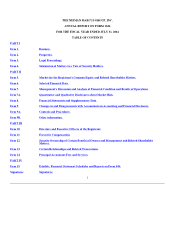 4
4 -
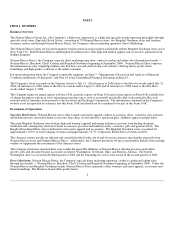 5
5 -
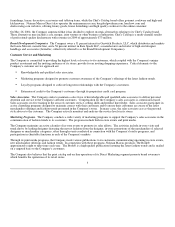 6
6 -
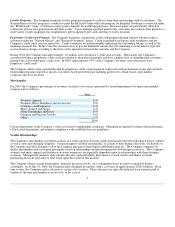 7
7 -
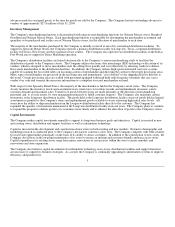 8
8 -
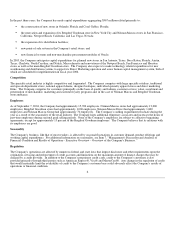 9
9 -
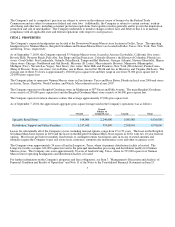 10
10 -
 11
11 -
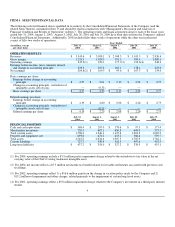 12
12 -
 13
13 -
 14
14 -
 15
15 -
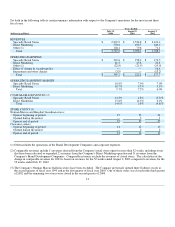 16
16 -
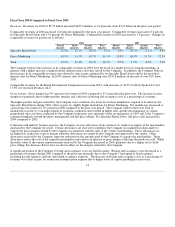 17
17 -
 18
18 -
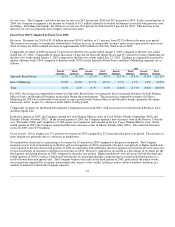 19
19 -
 20
20 -
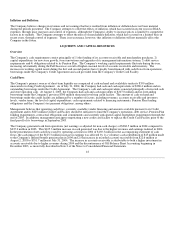 21
21 -
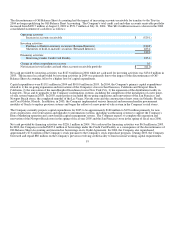 22
22 -
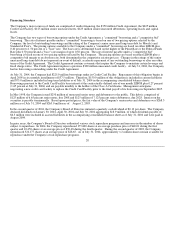 23
23 -
 24
24 -
 25
25 -
 26
26 -
 27
27 -
 28
28 -
 29
29 -
 30
30 -
 31
31 -
 32
32 -
 33
33 -
 34
34 -
 35
35 -
 36
36 -
 37
37 -
 38
38 -
 39
39 -
 40
40 -
 41
41 -
 42
42 -
 43
43 -
 44
44 -
 45
45 -
 46
46 -
 47
47 -
 48
48 -
 49
49 -
 50
50 -
 51
51 -
 52
52 -
 53
53 -
 54
54 -
 55
55 -
 56
56 -
 57
57 -
 58
58 -
 59
59 -
 60
60 -
 61
61 -
 62
62 -
 63
63 -
 64
64 -
 65
65 -
 66
66 -
 67
67 -
 68
68 -
 69
69 -
 70
70 -
 71
71 -
 72
72 -
 73
73 -
 74
74 -
 75
75 -
 76
76 -
 77
77 -
 78
78 -
 79
79 -
 80
80 -
 81
81 -
 82
82 -
 83
83 -
 84
84 -
 85
85 -
 86
86 -
 87
87 -
 88
88 -
 89
89 -
 90
90 -
 91
91 -
 92
92 -
 93
93 -
 94
94 -
 95
95 -
 96
96 -
 97
97 -
 98
98 -
 99
99 -
 100
100 -
 101
101 -
 102
102 -
 103
103 -
 104
104 -
 105
105 -
 106
106 -
 107
107 -
 108
108 -
 109
109 -
 110
110 -
 111
111 -
 112
112 -
 113
113 -
 114
114 -
 115
115 -
 116
116 -
 117
117 -
 118
118 -
 119
119 -
 120
120 -
 121
121 -
 122
122 -
 123
123 -
 124
124 -
 125
125 -
 126
126 -
 127
127 -
 128
128 -
 129
129 -
 130
130 -
 131
131 -
 132
132 -
 133
133 -
 134
134 -
 135
135 -
 136
136 -
 137
137 -
 138
138 -
 139
139 -
 140
140 -
 141
141 -
 142
142 -
 143
143 -
 144
144 -
 145
145 -
 146
146 -
 147
147 -
 148
148 -
 149
149 -
 150
150 -
 151
151 -
 152
152 -
 153
153 -
 154
154 -
 155
155 -
 156
156 -
 157
157 -
 158
158 -
 159
159 -
 160
160 -
 161
161 -
 162
162 -
 163
163 -
 164
164 -
 165
165 -
 166
166 -
 167
167 -
 168
168 -
 169
169 -
 170
170 -
 171
171 -
 172
172 -
 173
173 -
 174
174 -
 175
175 -
 176
176 -
 177
177 -
 178
178 -
 179
179 -
 180
180 -
 181
181 -
 182
182 -
 183
183 -
 184
184 -
 185
185 -
 186
186 -
 187
187 -
 188
188 -
 189
189 -
 190
190 -
 191
191 -
 192
192 -
 193
193 -
 194
194 -
 195
195 -
 196
196 -
 197
197 -
 198
198 -
 199
199 -
 200
200 -
 201
201 -
 202
202 -
 203
203 -
 204
204 -
 205
205 -
 206
206 -
 207
207 -
 208
208 -
 209
209 -
 210
210 -
 211
211 -
 212
212 -
 213
213 -
 214
214 -
 215
215 -
 216
216 -
 217
217 -
 218
218 -
 219
219 -
 220
220 -
 221
221 -
 222
222 -
 223
223 -
 224
224 -
 225
225 -
 226
226 -
 227
227 -
 228
228 -
 229
229 -
 230
230 -
 231
231 -
 232
232 -
 233
233 -
 234
234 -
 235
235 -
 236
236 -
 237
237 -
 238
238 -
 239
239 -
 240
240 -
 241
241 -
 242
242 -
 243
243 -
 244
244 -
 245
245 -
 246
246 -
 247
247 -
 248
248 -
 249
249 -
 250
250 -
 251
251 -
 252
252 -
 253
253 -
 254
254 -
 255
255 -
 256
256 -
 257
257 -
 258
258 -
 259
259 -
 260
260 -
 261
261 -
 262
262 -
 263
263 -
 264
264 -
 265
265 -
 266
266 -
 267
267 -
 268
268 -
 269
269 -
 270
270 -
 271
271 -
 272
272 -
 273
273 -
 274
274 -
 275
275 -
 276
276 -
 277
277 -
 278
278 -
 279
279 -
 280
280 -
 281
281 -
 282
282 -
 283
283 -
 284
284 -
 285
285 -
 286
286 -
 287
287 -
 288
288 -
 289
289 -
 290
290 -
 291
291 -
 292
292 -
 293
293 -
 294
294 -
 295
295 -
 296
296 -
 297
297 -
 298
298 -
 299
299 -
 300
300 -
 301
301 -
 302
302 -
 303
303 -
 304
304 -
 305
305 -
 306
306 -
 307
307 -
 308
308 -
 309
309 -
 310
310 -
 311
311 -
 312
312 -
 313
313 -
 314
314 -
 315
315 -
 316
316 -
 317
317 -
 318
318 -
 319
319 -
 320
320 -
 321
321 -
 322
322 -
 323
323 -
 324
324 -
 325
325 -
 326
326 -
 327
327 -
 328
328 -
 329
329 -
 330
330 -
 331
331 -
 332
332 -
 333
333 -
 334
334 -
 335
335 -
 336
336 -
 337
337 -
 338
338 -
 339
339 -
 340
340 -
 341
341 -
 342
342 -
 343
343 -
 344
344 -
 345
345 -
 346
346 -
 347
347 -
 348
348 -
 349
349 -
 350
350 -
 351
351 -
 352
352 -
 353
353 -
 354
354 -
 355
355 -
 356
356 -
 357
357
 |
 |

ITEM 7. MANAGEMENT'S DISCUSSION AND ANALYSIS OF FINANCIAL CONDITION AND RESULTS OF
OPERATIONS
EXECUTIVE OVERVIEW
Company Profile
The Neiman Marcus Group, Inc., together with its operating divisions and subsidiaries, is a high-end specialty retailer. The
Company's operations include the Specialty Retail Stores segment and the Direct Marketing segment. The Specialty Retail Stores
segment consists primarily of Neiman Marcus and Bergdorf Goodman stores. The Direct Marketing segment conducts both print
catalog and online operations under the Neiman Marcus, Horchow, Chef's Catalog and Bergdorf Goodman (beginning in
September 2004) brand names.
The Company owns a 51 percent interest in Gurwitch Products, LLC, which distributes and markets the Laura Mercier cosmetic line,
and a 56 percent interest in Kate Spade LLC, a manufacturer and retailer of high-end designer handbags and accessories. Gurwitch
Products, LLC and Kate Spade LLC are hereafter collectively referred to as the "Brand Development Companies."
The Company's fiscal year ends on the Saturday closest to July 31. All references to 2004 relate to the fifty-two weeks ended July 31,
2004; all references to 2003 relate to the fifty-two weeks ended August 2, 2003 and all references to 2002 relate to the fifty-three
weeks ended August 3, 2002. References to 2005 relate to the fifty-two weeks ending July 30, 2005.
Management's Discussion and Analysis of Financial Condition and Results of Operations (MD&A) should be read in conjunction with
the Company's Consolidated Financial Statements and the related notes thereto contained in Item 15. Unless otherwise specified, the
meanings of all defined terms in MD&A are consistent with the meanings of such terms as defined in the Notes to the Company's
Consolidated Financial Statements.
Overview of the Company's Business
The Company believes that its unique product assortment of luxury, designer and fashion merchandise, coupled with its sales
promotion activities and its commitment to superior customer service, have been critical to the Company's success in the past. In
addition, the Company believes these factors are critical to the Company's future growth and success.
The Company conducts its selling activities in two primary selling seasons – Fall and Spring. The Fall Season is comprised of the
Company's first and second fiscal quarters and the Spring Season is comprised of the Company's third and fourth fiscal quarters.
The first quarter is generally characterized by a higher level of full-price selling with a focus on the initial introduction of Fall Season
fashions. Aggressive in-store marketing activities designed to stimulate customer buying, a lower level of markdowns and higher
margins are characteristic of this quarter. The second quarter is more focused on promotional activities related to the
December holiday season, the early introduction of resort season collections from certain designers and the sale of Fall Season goods
on a marked down basis. As a result, margins are typically lower in the second quarter. However, due to the seasonal increase in
sales that occurs during the holiday season, the second quarter is typically the quarter in which the Company's sales are the highest and
in which expenses are the lowest as a percentage of revenues. The Company's working capital requirements are also the greatest in
the first and second quarters as a result of higher seasonal levels of accounts receivables and inventory.
Similarly, the third quarter is generally characterized by a higher level of full-price selling with a focus on the initial introduction of
Spring Season fashions. Aggressive in-store marketing activities designed to stimulate customer buying, a lower level of markdowns
and higher margins are again characteristic of this quarter. Sales are generally the lowest in the fourth quarter and are focused on
promotional activities offering Spring Season goods to the customer on a marked down basis, resulting in lower margins during the
quarter.
A large percentage of the Company's merchandise assortment, particularly in the apparel, fashion accessories and shoe categories is
ordered months in advance of the introduction of such goods. For example, women's apparel, men's apparel and shoes are typically
ordered 6-9 months in advance of the products being offered for sale while
10
